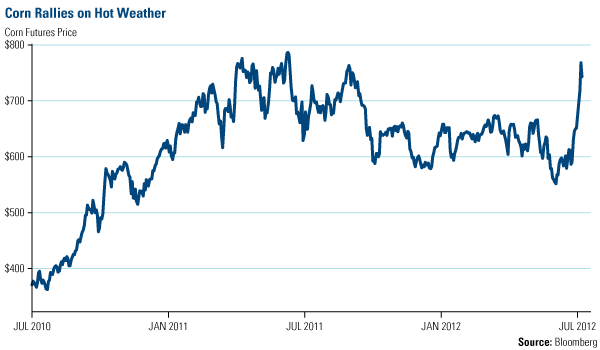Energy and Natural Resources Market Radar (July 9, 2012)

Strengths
- Brent crude continued to advance after a proposed bill in Iran threatened to block off oil transportation through the Strait of Hormuz. This would prevent tankers from delivering oil to countries that have imposed sanctions against Iran.
- U.S. auto sales were solid in June at 14.1 million Seasonally Adjusted Annual Rate (SAAR), above expectations and better than the 13.8 million units in May. Autos remain one of the more solid parts of the commodity demand equation, with even troubled economies like Europe meeting fairly pessimistic expectations rather than deteriorating again.
- South Korea is planning to increase spending on industrial metals by 9.4 percent for 2012. Hyundai car exports were up 7.7 percent compared to last June, and continued sales growth is expected. South Korea’s demand for metal shows promise and it will definitely look to take advantage of these low commodity prices (the LMEX index, which tracks copper, aluminum, lead, tin, zinc, and nickel, has dropped 21 percent in the past year).
- Corn prices jumped to a nine-month high close of $7.68 per bushel this week and have surged more than 39 percent since June 1, as a crop-damaging drought in the U.S. Midwest shows no signs of abating. The crop’s condition deteriorated for the fourth straight week as of July 1, with 48 percent of corn rated good or excellent, the worst for that date since 1988, the U.S. Department of Agriculture said earlier in the week.
- Wheat futures also have gained 34 percent since June 1 to a 13-month high close of $8.22 this week on news that dry weather has damaged the Russian wheat crop and exports will be lower than expected.
Weaknesses
- Iron ore hit a three-week low over concerns about China’s slowing growth, and Brazilian iron ore exports saw a 17 percent drop in value for the month of June. China’s Purchasing Managers Index (PMI) was released at 50.2 for the month of June, beating expectations but still showing signs of deteriorating expansion. China consumes more iron ore than any other nation, and this backward demand will be reflected in the prices of many of these industrial commodities.
- Oil futures on the New York Mercantile Exchange dropped as the dollar gained value against the euro. This came after Mario Draghi, President of the European Central Bank, stated that economic risks remain prevalent despite interest rate cuts.
- Low natural gas prices continue to take market share from coal for power generation. Coal production in the U.S. declined 9.2 percent in June from last year’s levels, according to government data. Output totaled 80.5 million short tons in June, and year-to-date production was about 504 million, 6.2 percent lower than the same period in 2011, according to a report by the U.S. Energy Department. U.S. producers have cut thermal-coal production in response to lower consumption by power generators with output down by about 1 million tons a week compared with a year ago, Deutsche Bank AG said in a report this week.
Opportunities
- Iron ore mining in the Karnataka state of India is said to resume operations this month after being banned for the past year over environmental concerns. However, the iron ore can only be exported once domestic consumption has been met, and it must be at a price higher than auction offering.
- Six blocks of land are being auctioned off by the government of Afghanistan for exploration, and Exxon Mobil is one of the companies that have shown interest. Studies conducted by agencies such as the United States Geological Survey have indicated that there may around 1 billion barrels of oil and natural gas to be found in the region.
- Botswana reduced minimum company tax by 3 percent in hopes of attracting more non-mineral based investment and exploration projects.
- Reuters reported that BHP could tighten global copper supply starting in late 2013 if it postpones work on its single-biggest project, the $30 billion expansion of the Olympic Dam mine in Australia. This dam is the fourth-largest known copper deposit and largest uranium source in the world.
- The crude oil market may tighten on supply problems in Norway. Statoil ASA said it is likely to shut production on the Norwegian continental shelf as employers locked out striking platform workers after mediation talks failed. This lock out would halt the nation’s entire offshore production to the total of about 2 million barrels a day.
Threats
- China’s demand for West African crude oil weakened as it purchased about 12 percent less supply for July than in June. Brent crude prices may be affected if this continues as China is the top energy consumer in the world.
- Just as CaNickel Mining Ltd suspended operations at its Brucko Lake Mine due to low nickel prices, Eramet is planning to increase output 12 percent by 2015 at one of its plants with expectations of meeting a higher demand from China and India. However, growth and demand have been slowing recently, and this may be counter productive if we want to see gains in global nickel prices anytime soon.











